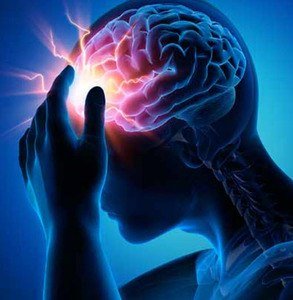Epilepsy
Introduction
Epilepsy is a chronic neurological disorder characterized by the recurrent, unsafe seizures caused by abnormal electrical activity in the brain. Seizures may vary in severity, frequency and symptoms, affecting movement, sensation, awareness, or behavior. This can occur at any age and result in genetic factors, brain injuries, infections, strokes or developmental disorders. Initial diagnosis and proper treatment can help control the recovery and improve the quality of life.

Types of Epilepsy
Focal (partial) epilepsy
The seizures arise in a specific area of one side of the brain, causing symptoms such as the audience's twitch, abnormal sensations, or changes in awareness.
Generalized Epilepsy
From the beginning both sides of the brain are included, leading to widespread effects such as convulsions, loss of consciousness, or staring mantras.
Idiopathic epilepsy
No identifiable brain damage or cause is found; It is often believed that genetic and usually begin in childhood or adolescence.
Symptomatic Epilepsy
Occurs due to an identifiable cause such as brain injury, tumor, stroke, or infection that affects brain function.
Causes of Epilepsy
- Brain injuries from accidents or trauma can trigger abnormal electrical activity.
- Stroke or low blood supply to the brain can damage the brain tissue.
- Brain infections such as meningitis, encephalitis, or neuroscurosis may occur.
- Genetic factor and family history can increase the risk of epilepsy.
- Birth injuries or oxygen deficiency can cause seizure disorders during delivery.
- Developmental disorders such as autism can be associated with epilepsy.
- Falls, sports or violence can cause head injuries to cause brain damage.
- Dear degenerative brain diseases such as Alzheimer's can trigger seizures.
- Metabolic disorders or chemical imbalances can disrupt brain function.
- Unknown reasons where no specific cause is found despite testing.
- Alcohol or drug abuse and sudden withdrawal recovery can integrate.
Clinical features of Epilepsy:
Recruitment seizures
repeated episodes of abnormal brain activity, which cause shocking movements, rigidity or staring mantras.
Loss of consciousness
Some seizures result in partial or awareness.
Sensory disturbances
suddenly unusual sensations such as tingling, visual glow, or a strange smell before a seizure.
Behavior change
during or later during a seizure, temporary confusion, unanswered, or unfair actions.
Postal symptoms
fatigue, headache, or memory loss after a seizure episode.
Symptoms associated with Epilepsy
- Sudden uncontrollable shocks or weapons and legs of the legs.
- Less urination than usual with dark col Temporary confusion or disorientation during the episode. or.
- Blood in urineMantra or empty ghazal staring for several seconds.
- Sudden loss of consciousness or awareness.
- Mantra or empty ghazal staring for several seconds.
- Unusual sensations such as tingling, smell, or taste.
- Temporary inability to speak or respond.
- Sudden hardening of body muscles.
Investigations in Epilepsy
- measures and records the electrical activity of the brain, which helps in detecting abnormal wave patterns that indicate seizure activity.
provides detailed images of brain structures due to seizures due to tumors, scars, or abnormalities.
uses X-rays to create cross-individual brain images to detect scan-chips, bleeding or structural abnormalities.
Identify potential infections, metabolic issues, or chemical imbalances that can trigger or deteriorate the seizure episode.
seizure starts, types and correct analysis of related behavior records electrical brain activity and video together.
measures brain metabolism and function to detect areas with abnormal activity associated with seizures.
highlight areas of blood flow converted into the brain during or later during the seizure activity.
assesses memory, attention and cognitive functions to understand the seizure effect on brain performance.
identifies inherited genetic mutations that may be responsible for some forms of epilepsy, especially in children.
